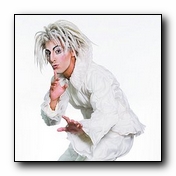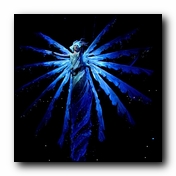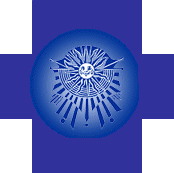 I found my inspiration in the world of the tarot, but also in the Italian Renaissance and
the world of Leonardo da Vinci, with a nod to other painters of that time, such as Hieronymus
Bosch and Raphael.” (Renée April, Costume Designer)
I found my inspiration in the world of the tarot, but also in the Italian Renaissance and
the world of Leonardo da Vinci, with a nod to other painters of that time, such as Hieronymus
Bosch and Raphael.” (Renée April, Costume Designer)
ZED is above all a show driven by its characters, who are inspired by the mysteries of
the tarot. This rich gallery of colorful individuals gave director Francois Girard a poetic
premise to build on, and the task of dressing them fell to costume designer Renée April. ZED
is the meeting of two worlds: the sky – where iridescent colors, paler shades and pearl and
silver predominate – and the earth, which recalls the Italian Renaissance, with an emphasis
on ochre, green, intense turquoise, gold and Venetian blue.
“I was aiming for a certain homogeneity and purity of line in keeping with the visual
world of François Girard,” explains Renée April. “The 150 costumes in the show also reveal
my playful side, but they are not caricatures. I work a lot through emotion and intuition.
I always prefer works that project the viewer into a distant era. Even though that calls
for more in-depth research, I am not trying to replicate the era in great detail. I always
concentrate more on an interpretation of it.”
The Characters and Their Costumes:
The Shaman - Master of the Arcana, the Shaman wears a transparent copper-colored mesh
outfit that contrasts with his black skin. White tribal patterns are painted onto his costume
and he also wears a tribal headdress, a coat that is open in front and a twisted leather cape
decorated with belts encrusted with small items such as stones and pieces of fur.
 Djinn - His costume is made from a stretch silicone material adorned with a kind of gold leaf,
which makes it look as though he is wearing a huge Aztec or Inca necklace. Covered in
tattoos, he is dressed in gold and turquoise blue with shades of green.
Djinn - His costume is made from a stretch silicone material adorned with a kind of gold leaf,
which makes it look as though he is wearing a huge Aztec or Inca necklace. Covered in
tattoos, he is dressed in gold and turquoise blue with shades of green.
The People of the Sky - Turquoise, blue and iridescent colors predominate in these poetic
characters’ costumes. They are made from a fabric that looks fragile, but is in fact very durable.
It is impossible to know where the suit ends and where the skin begins. The characters look like
dragonflies with large antennas or elves. The Nymphs, who also belong to this people, are dressed
in chiffon and cristalette, and resemble jellyfish with fiery tails.
Nouit, The Great Goddess - he creator of the firmament, Nouit is fitted with 14 wings
and a headpiece that lights up. Her costume is decorated with 400 LEDs.
Kernoun, The God of Hell - The medieval character Kernoun, who holds fire in his hands, wears
laced boots and a large silk coat that turns gradually from yellow to dark brown ochre, and onto which a hundred cornettes – orange and red flowers – have been sewn. Many of them
are motorized to create a ripple effect.
The Satyrs and Jugglers - These characters, who embody the indomitable forces of nature,
wear “justaucorps,” costumes that reveal their muscles and bear flames that go over their heads like the horns of goat.
Abraka, King of the Earth - The magus Abraka wears a chain mail coat and a large royal collar.
When he raises his arms, his four wings, which range gradually from purple to gold, spread out
over 18 meters. His costume required 200 meters of cloth pleated by hand and printed with designs
using a technique called sublimation, which fixes the images in the fibers of the material.
Abraka is flanked by servants who wear gold and blue Venetian livery.

![]()




